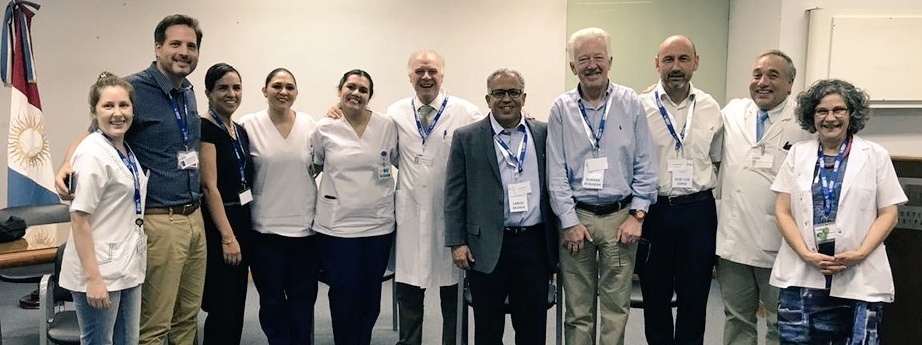The BMT Program of the Private Universitary Hospital of Córdoba in Argentina, was the first centre in Latin America to be inspected as part of a pilot group participating in the FACT-JACIE Stepwise Certification Program. Patricia Abichaín, Quality Manager, explains the preparation process and the inspection that took place on November 20-21.
First joint FACT-JACIE Inspection in Latin America: our experience.
The “Programa de Trasplante de Médula Ósea del Hospital Privado Universitario de Córdoba, Argentina”, member of the Latin America Bone Marrow Transplantation (LABMT) cooperative group, was the first centre in Latin America to be part of the pilot group in the FACT-JACIE Stepwise Certification Program. This project is an innovative proposal for centers in this geographic and economic region to provide a pathway to achieve full accreditation through a step-by-step process.
To be selected for “The Stepwise Certification Program” meant a great challenge for us. It started in July 2017, when we sent the Application Form; a few months later, we received the documentation that should be completed, including the inspection checklist, which became our working tool during several months.
In order to move forward in this process, it was a great advantage to be a joint program (Collection Unit, Processing Unit, and Clinical Unit working together in a single location), strongly motivated by the Program´s Director, who became the leader of a working team formed by the units’ directors, representatives of the units and members of an external company of Quality Consulting. The first task was to perform an internal audit to assess our situation, design a workflow, and finally start making some changes in our way of working.
Completing the inspection checklist was really a huge effort. We spent almost 3 months working on it to achieve the first version that we submitted on March 16, 2018. Fortunately, we had support from FACT and JACIE, who helped us to understand the Standards and demonstrate evidence of compliance.
In the meantime, we began to build a “Quality Management System”. The first step was to name a Quality Manager who wrote a Quality Plan in collaboration with the units’ representatives. This group, our Quality Committee, defined measurable outcomes, performed internal audits, implemented validation plans for critical processes in different areas, worked together with the institution’s Human Resources Management in creating job descriptions for keys positions, adopted both the institution’s System for Document Control (knowing with certainty the importance of this chapter in the scaffolding of a Quality Management System for both the hospital and the transplant program), and developed an Incident Reporting System encouraging personnel to know and use them; involved the institutional Bioengineering section for control and maintenance of critical equipment, as the most relevant items. To accomplish this challenge, it was extremely useful to have access to the FACT Quality Handbook, the JACIE Quality Management Guide, and documents kindly provided by generous centers from Europe and the United States.
In each unit, Standard Operating Procedures (SOPs) were written, discussed, reviewed and implemented. All of them are first version and we will update them in the near future adopting guidance provided by JACIE and FACT inspectors. Besides writing SOPs, we tried to re-organize the activities with regards to human resources, facilities and equipment. We also introduced simple statistical tools in order to follow-up on our measurable outcomes.
During this time, we reviewed and updated the checklist to find the best evidence for each standard. Closer to the inspection date, we multiplied our efforts to be on time!
The onsite inspection took place on November 20–21, 2018 and was performed by a team of four international inspectors (United States, Spain and Norway) from FACT and JACIE. The inspection was performed in a rigorous and friendly way. To note, this was the first time that inspectors of both accreditation organizations worked together on a joint inspection. We could appreciate subtle differences in the interpretation of some standards, which, in turn, enriched the inspection experience in our opinion. Additionally, we took advantage of the exchange of opinions among colleagues in the field of transplantation, which was very useful for us.
At the end, the closing remarks were extremely helpful; we took note of our strengths and our weaknesses, mostly in Quality Management. We are now waiting for the Inspection Report, but in the meantime, we continue working in accordance with the inspectors’ observations and non-conformities found during inspection.
In summary, this was a great experience. We learned that the most challenging thing was to achieve staff motivation and cultural change, but the inspection itself gave us strong encouragement to continue working in order to achieve the FACT-JACIE First Step Certification in the next few months.
